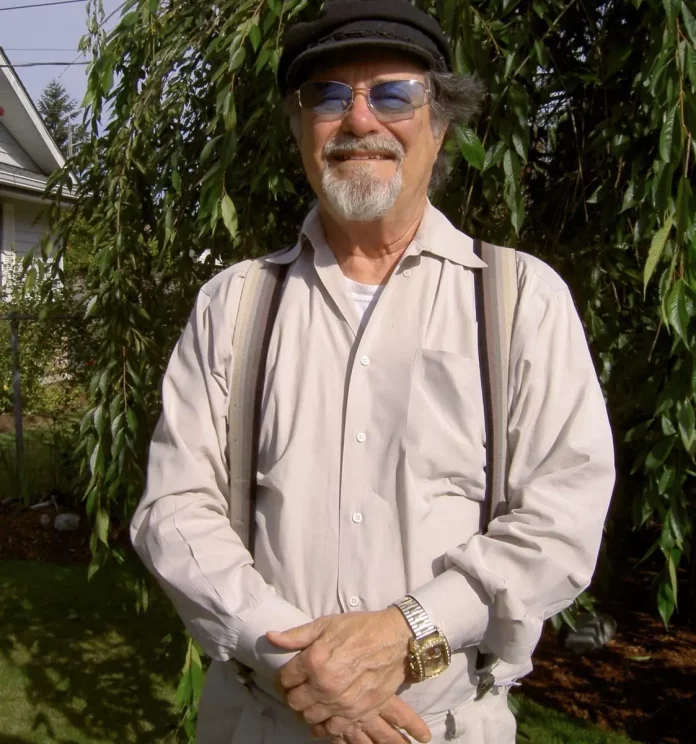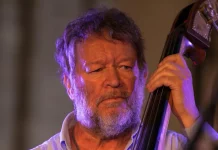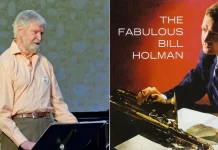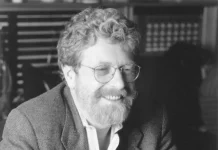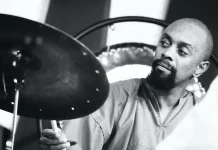Though not a household name, arranger, composer and pianist Bob Hammer worked with many jazz greats during a long and varied career. Bob learned how to play early jazz styles from his father, a trumpeter in the classic territory bands of the 30s. When he got to New York in 1953, it did not take long to establish himself as a first-call pianist for the likes of Henry Red Allen, Bud Freeman, Roy Eldridge, Vic Dickenson and others. He was also comfortable in big band and modern jazz settings, mainly as an arranger, though his piano skills were more than adequate. Beginning in 1956 or 57, he spent several years as musical director to Charles Mingus. Mingus dubbed Hammer “My Beethoven,” indicating high regard for his abilities.
Born Howard Robert Hammer, 3 March 1930, Indianapolis, Indiana, Bob gained early playing experience on the local scene with Slide Hampton, Buddy Montgomery and others, including Wes Montgomery. “Nobody heard Wes play like we did in Indianapolis,” Bob told me in a 2009 interview. “They put him with the strings and the lush arrangements . . . but it was not what Wes was capable of.”
In 1949, he studied music at Michigan State University. The U.S. Army called in 1951, and he graduated to military bands. Discharged in 1953, he spent a few months learning the trade on the road with one of the last of the territory bands of that era.
After coming off the road, he pursued formal instruction at the Manhattan School of Music. For the next 14 years (1953-67), he called New York home, revelling in the “golden years” of the Big Apple’s lively and varied jazz scene. “I remember one week”, he told me, “playing with Red [Allen] and writing for Woody [Herman] and writing for Mingus . . . [that’s] interesting at that period of life, in your 20s, to learn all that stuff.” Bob’s ability to play with the older cats led to extended gigs at Condon’s and at the Metropole. At the Metropole, Bob occasionally sat in with the Lionel Hampton Orchestra. “So one night I’m playing with Hamp, and Red gets up and plays, and man, hearing Red playing over that band, roaring, it was really a classic moment.”
Another association at this time was a group calling themselves “The Six”, featuring a front line of Bob Wilber and trumpeter John Glasel. The band enjoyed some success, recording two albums for Bethlehem. They played the Newport Jazz Festival in 1955.
By 1957 Hammer was employed by Mingus, having first to tame the beast in the mercurial bassist. “The first time I met him, he tried to bully me. I said: ‘Mingus, you’re being a big bully. I’m not going to bullshit with this’ . . . He said: ‘Okay’ – you know, backed off.” Hammer contributed to recordings like A Modern Jazz Symposium, which combined jazz and poetry, and New York Sketchbook.
He continued to work with the bassist into his Impulse period, resulting in some fine recordings. He was particularly proud of his work on Mingus Mingus Mingus Mingus Mingus (1963), most of which he scored. “I felt it was probably the closest synthesis that you’re going to get to written and free improvised jazz.” He also worked on the renowned The Black Saint And The Sinner Lady, about which he expressed some ambivalence: “He [Mingus] only had about 20 minutes of music, two sides to fill . . . so he says: ‘I’ll have Bob write 12 bars interlude, then we’ll . . . record the same stuff on the other side.'” Whatever Hammer thought of it, the record has enjoyed considerable critical acclaim.
At the Town Hall concert in October 1962, Bob witnessed what may have been the nadir of Mingus’s career. Despite the presence of such stars as Eric Dolphy, Charlie Mariano, Zoot Sims, Clark Terry and others, Mingus had failed to prepare enough music and the concert was a fiasco. “We were”, recalls Bob, “sitting on the stage, off to the side, copying as the music’s being played.”
Bob wrote for Woody Herman, and for a couple of Johnny Hartman’s Impulse albums, among other projects. He was also engaged to write liner notes for Impulse, revealing another of his talents.
The “golden years” were not fated to last. By 1967, the New York jazz scene had virtually dried up, so Bob moved his family out to Las Vegas. Work was fairly steady in Vegas, and he stayed until 1982. After Vegas, Hammer lived in Oklahoma for about a year before relocating to L.A. in ’83. He continued to write and to play, working frequently at the fabled Lighthouse.
Bob and his wife Arlene made the move to the Seattle area in 1995 to be closer to their children who had ended up there. He soon established himself on the local jazz scene, playing mostly with old-guard musicians like Buddy Catlett (last bassist in the Armstrong All Stars) and legendary Seattle jazzman Floyd Standifer. One of the last of the players associated with the vibrant Jackson Street scene of the 40s that launched the careers of Ray Charles, Quincy Jones, Ernestine Anderson and others, Floyd played marvellous Navarro-styled trumpet and flugel, as well as bluesy tenor sax. He was also a wonderful singer out of the rich Billy Eckstine black baritone school. A couple of years before Floyd passed in 2007, Bob joined him for a CD by Floyd Standifer and the Pampas Quartet, released on local label Pony Boy and called Scotch And Soda. “I like that record,” Bob told me. “In retrospect, I’m glad we did [it].” He stayed busy writing, too, supplying scores and compositions for whomever needed them. Bob’s son Pete tells me his father remained active into his late 80s.
Bob Hammer slipped away 26 December 2021 in Chehalis, WA, aged 91. According to Pete, Bob died peacefully, surrounded by family, his sense of humour in tact, a gracious coda to a life well lived.

